
7 minute read
North American Construction Group
North American Construction Group supplies nearby plant with an abundance of lignite that is used to power South Texas
Power plants need a fuel source, and in South Texas, lignite has been a major one for decades.
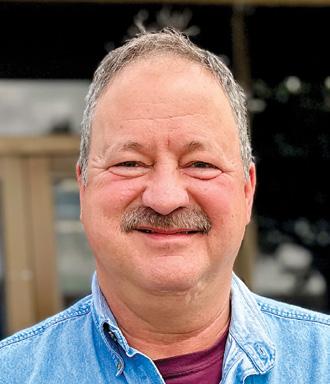
“Lignite, which some people refer to as soft coal or brown coal, is plentiful in this area,” stated Tom Shaw, General Manager of North American Construction Group (NACG), which is contracted to haul lignite from the San Miguel Lignite Mine to the nearby San Miguel Electric Cooperative, which owns the mine. “Generally speaking, it’s a lower BTU (British thermal unit) per-pound value and softer than other types of coal, but it’s still valuable in making electricity.”
Located about an hour south of San Antonio, the mine has been a source of lignite for San Miguel Electric Cooperative since 1980. NACG took over mine operations in 2020 and delivered about 3 million tons of lignite to the 391-net-megawatt power plant last year. NACG expects to deliver a little more than 2 million tons this year because the plant is using some stockpiled material from the year prior and plans on ramping back up in 2024.
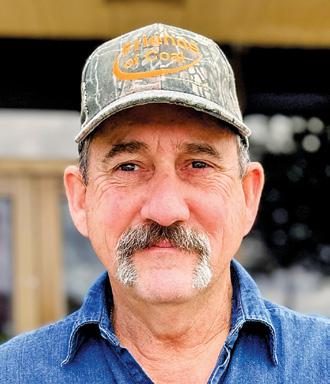
Maintenance Manager John Trouart, who has worked at the mine for about two decades, has seen quite a few changes over the years.
“The geology has differed depending on where we are mining,” explained Trouart. “The coal seams are getting deeper, and the haul distance has increased. When I started here, we were hauling out of one area that was about 3 miles from the plant. Now, we have multiple locations we are mining that can be up to 8 or 9 miles.”
Shaw emphasized that even at longer distances, harvesting lignite from the San Miguel Lignite Mine is still the best option for supplying the power plant.
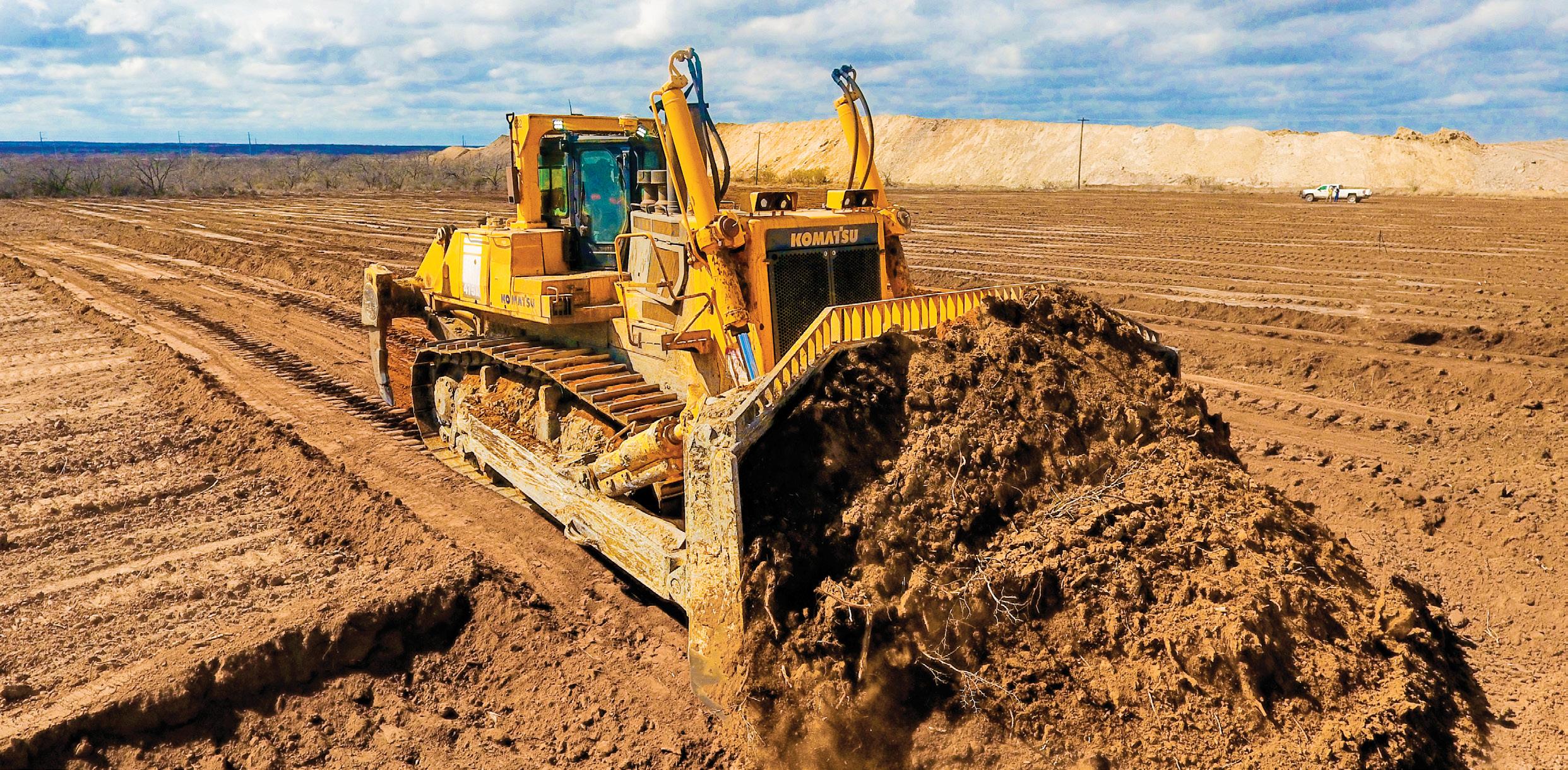
“Having the mine close to the power plant is very economical because having to haul in lignite or another type of coal from hundreds or thousands of miles away is expensive and increases costs,” said Shaw.
Komatsu equipment maximizes productivity
Due to the deeper coal seams that can range from 90 to 160 feet, NACG began using additional equipment to pre-bench and pre-strip instead of just using draglines.
“The draglines’ booms are not long enough to open up a pit, and they are intended to pick up material once,” explained Shaw. “It’s expensive to have them move dirt multiple times in different locations. They are meant to be fixed-radius machines that sit in one spot for long periods of time. We started utilizing a Komatsu PC2000 excavator in 2007 to remove topsoil and subsoil and haul it back to previously excavated areas for fill and as part of the reclamation process.”
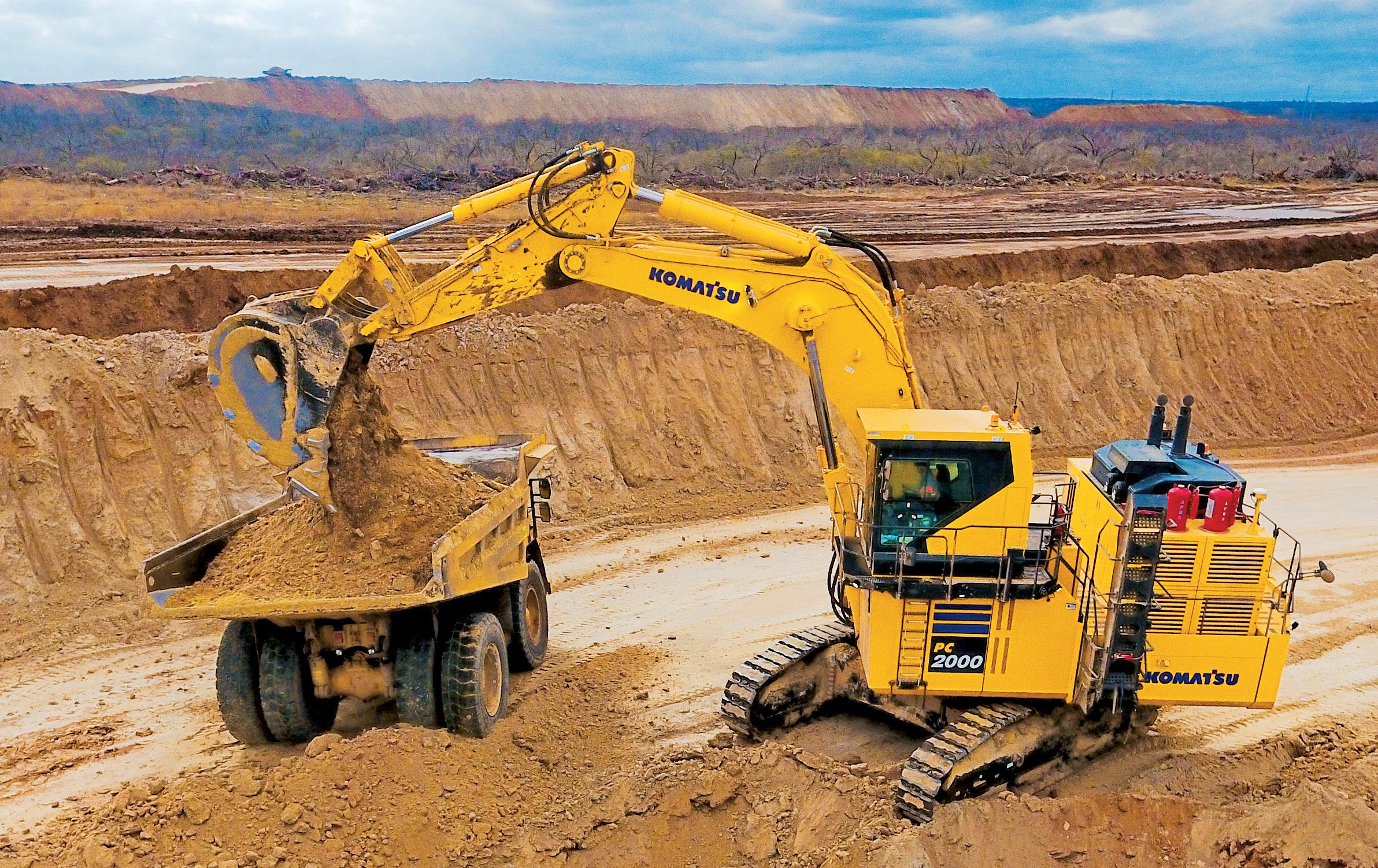
NACG continues to run its original PC2000, which now has about 88,000 hours on it. The company has since added two more, including a new PC2000-11 with a 19-yard bucket and an operating weight that ranges from 445,179 pounds to 456,926 pounds.
“The quality of the PC2000 is excellent,” said Trouart. “Nothing has been done to the original machine other than component changes. The availability has been above 85% on all of them. The hydraulics on the new PC2000-11 are even faster than the previous ones. It runs more like a smaller excavator than a mass excavator. The response and swing time are better, so it’s more productive, which means we can move dirt faster, and that’s our aim. We also like the extremely quiet cabs, which contribute to greater operator comfort and productivity.”
Operator Tyler Lee noted that the PC2000-11 seemed to be built with the operator in mind and appreciates the comfortable seat and roomier cab as well as several other new features.
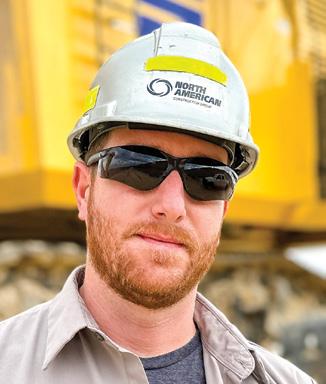
“I really like the multiple cameras and the bird’s eye view,” said Lee. “I don’t have to turn my head to see what’s around me. I can look at the monitor and get a full view of the area. I feel like it increases safety because I’m more aware of what’s around me at all times. I also like the hydraulic ladder that can be raised and lowered with the push of a button. It’s wider and more like stairs than a ladder, which makes it easier to get up and down when carrying a bag or a cooler.”
Currently, Lee uses the PC2000-11 to dig down 45 to 50 feet and load NACG’s Komatsu HD785-7 off-highway trucks that have nominal payloads of 100 tons. NACG uses the trucks to haul dirt to reclamation sites, haul ash from the plant, and occasionally haul coal to the plant. Operators spread ash and earth with Komatsu D375 and D475 dozers.
“We moved to the bigger D475 dozers a few years ago because they allow us to move more dirt faster, so the productivity rate increased and our cost per hour to move dirt decreased,” said Trouart. “We have done some component changes and undercarriage replacements, but those are a normal part of working in the conditions we do.”
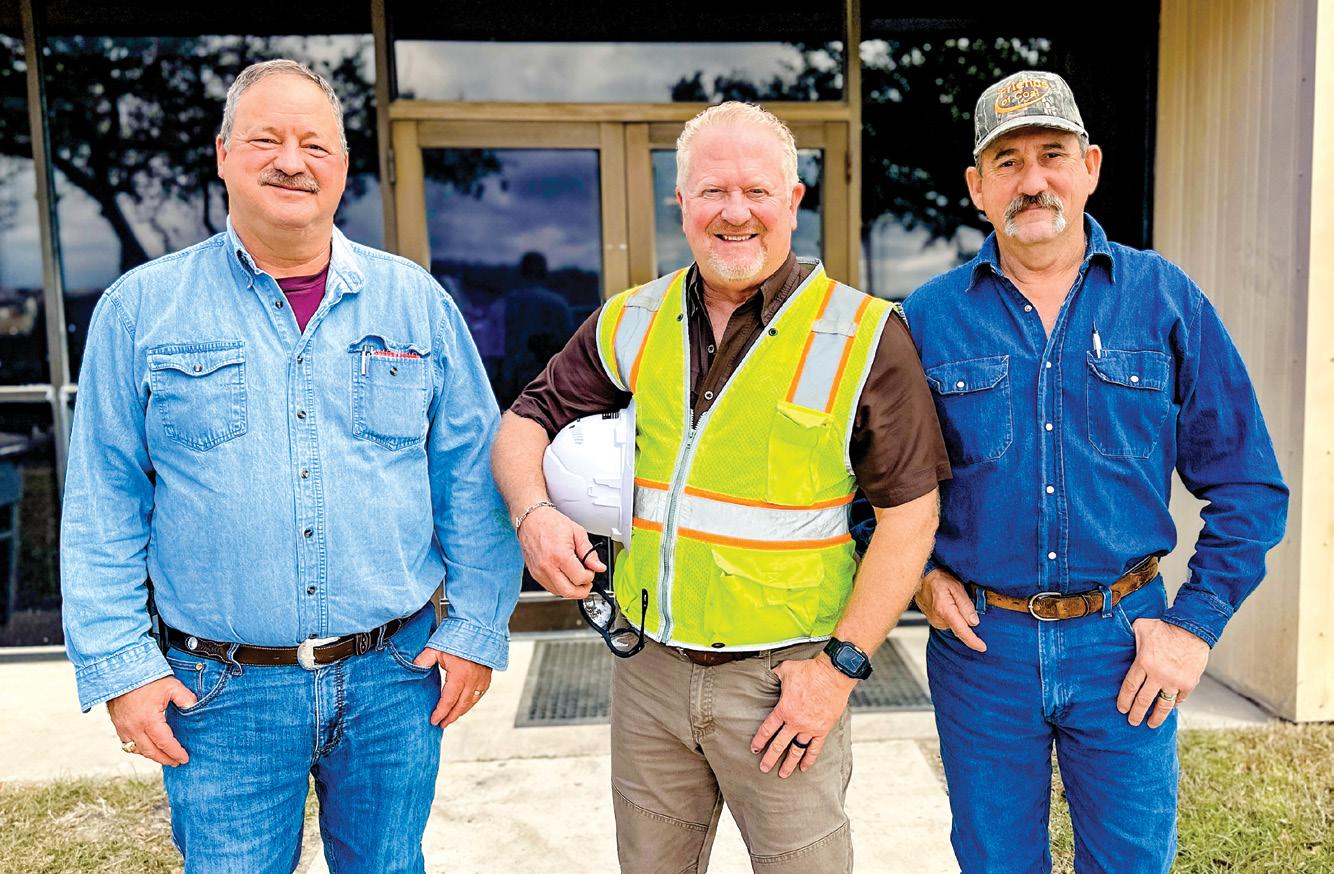
Another way NACG increases efficiency at the mine is by utilizing “coal trains,” which are older Komatsu 330M trucks with 120-ton trailers. NACG runs the coal trains 24 hours a day to keep the power plant supplied with lignite.
“All four of those trucks have more than 110,000 hours on them, and we have never had to do anything to them other than component exchanges,” said Trouart. “That longevity contributes to lower per-ton costs.”
Excellent service
Trouart emphasized that a main reason for purchasing the Komatsu PC2000 excavators was dealer service. NACG works closely with Waukesha-Pearce Industries LLC (WPI) personnel, including Vice President of Major Accounts Frank Pagura and Product Support and Mining Sales Representative Mike Harris.
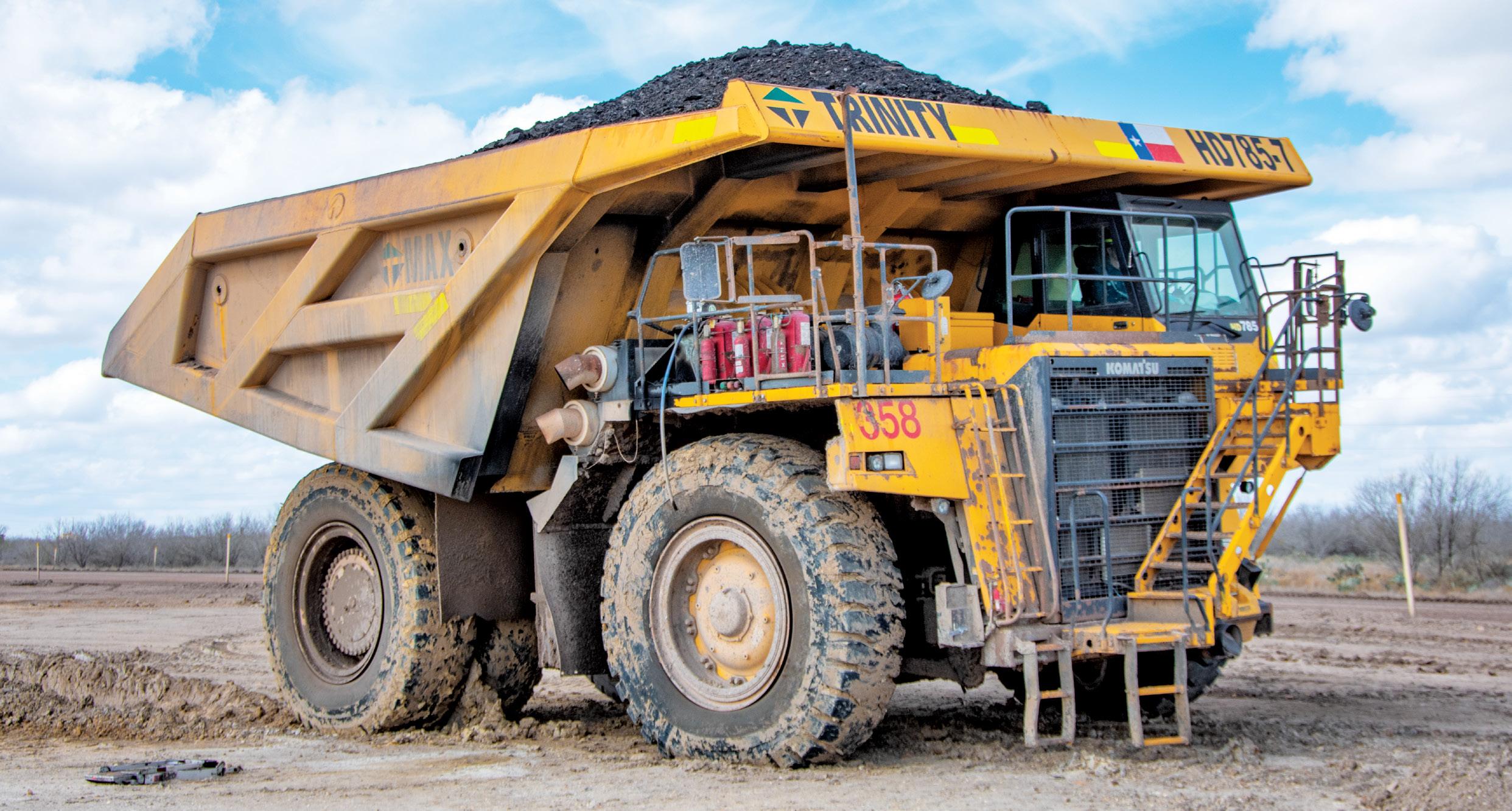
“I had some experience with another brand, and we looked at it and the Komatsu,” recalled Trouart. “Our history with WPI was the determining factor. Our relationship has grown, especially in the last few years. Product support is very important to us, and we keep going back to WPI and Komatsu machines because we get the service and parts that we need. WPI also provides us with on-site techs five days a week.”
Optimistic for the future
According to Shaw, there are a lot of factors to consider when thinking about what the future holds for the mine, but he and NACG are optimistic and hope to expand.
“We’re going through the permitting process to open another area,” said Shaw. “The current mine plan runs through 2037, but environmental rules and regulations may have an effect.” ■



